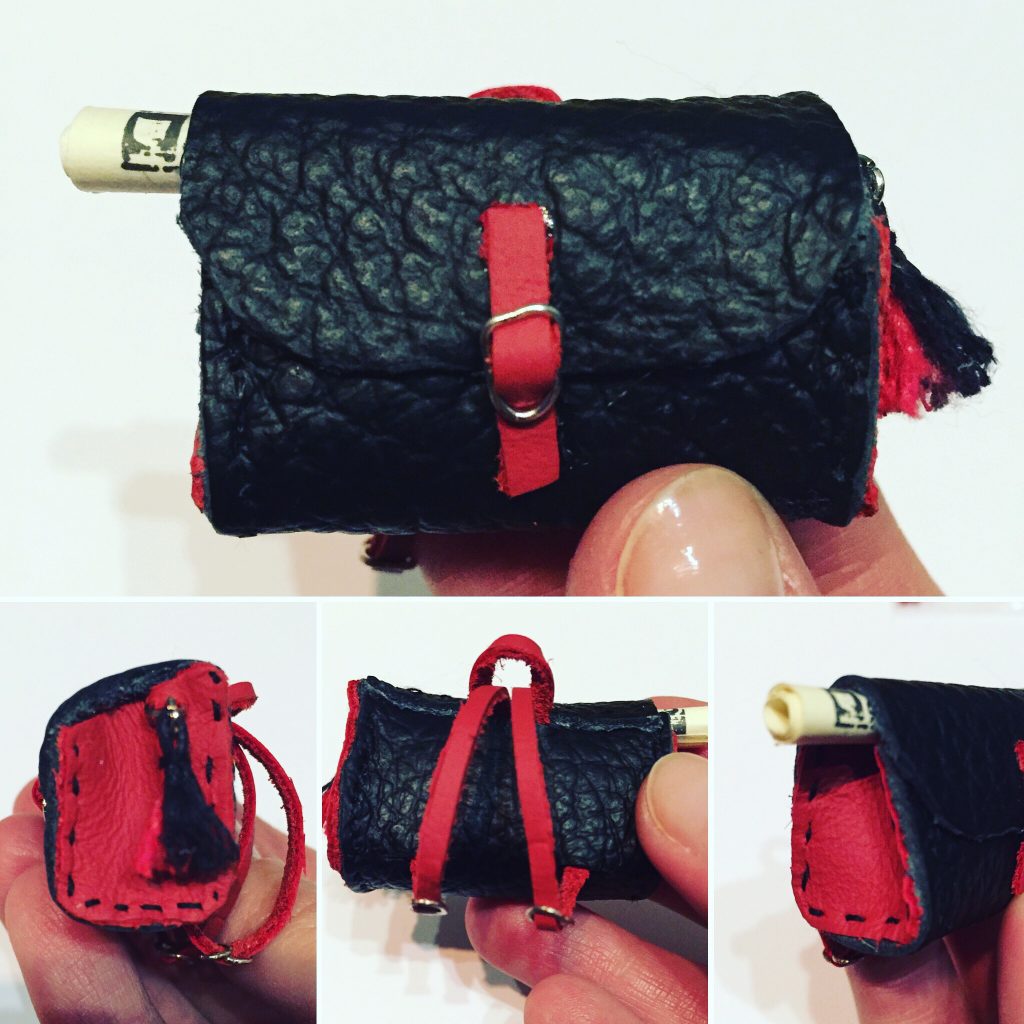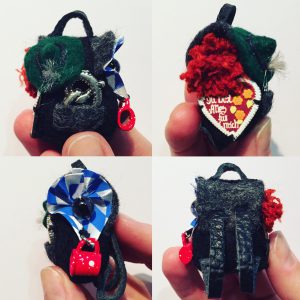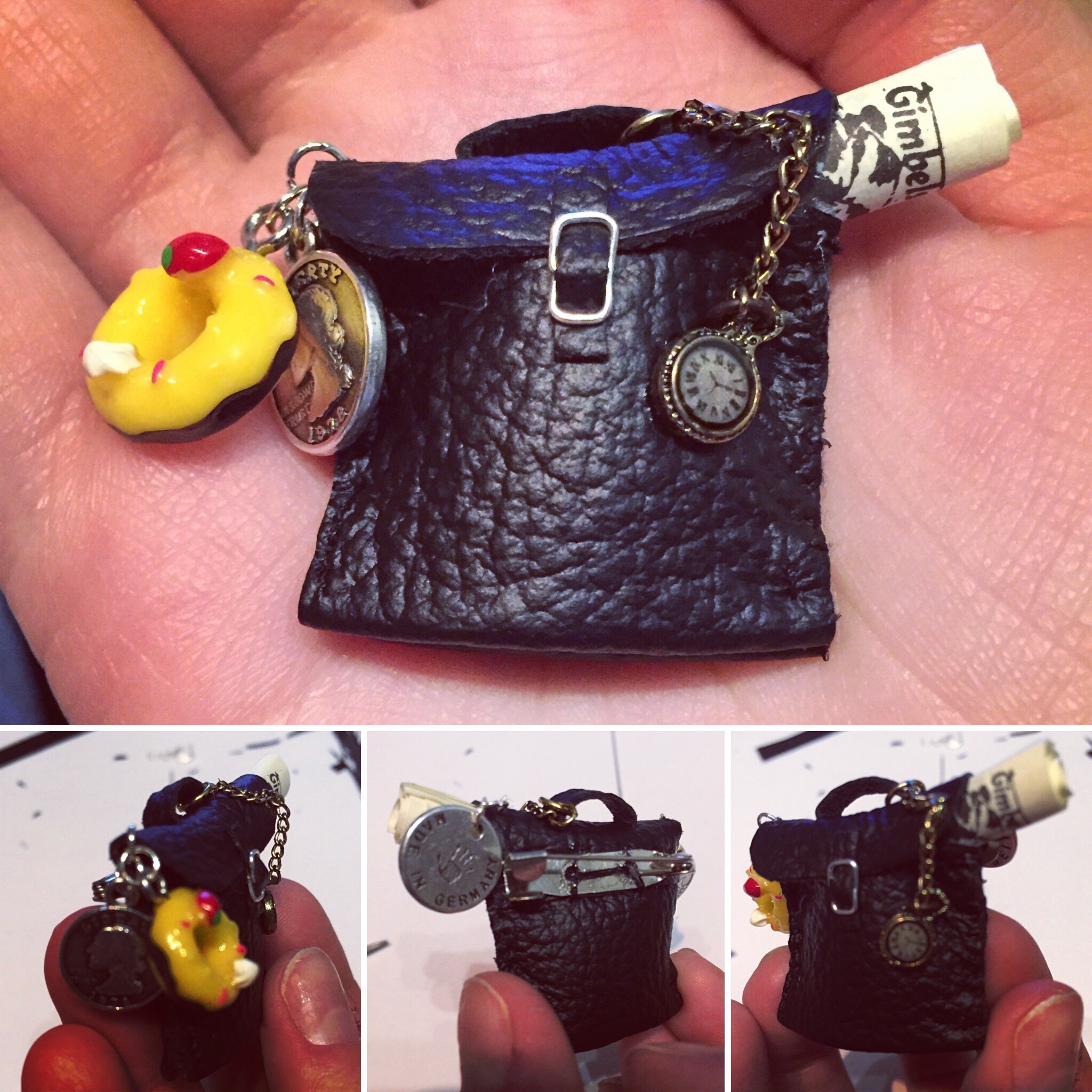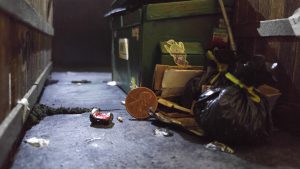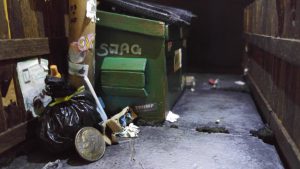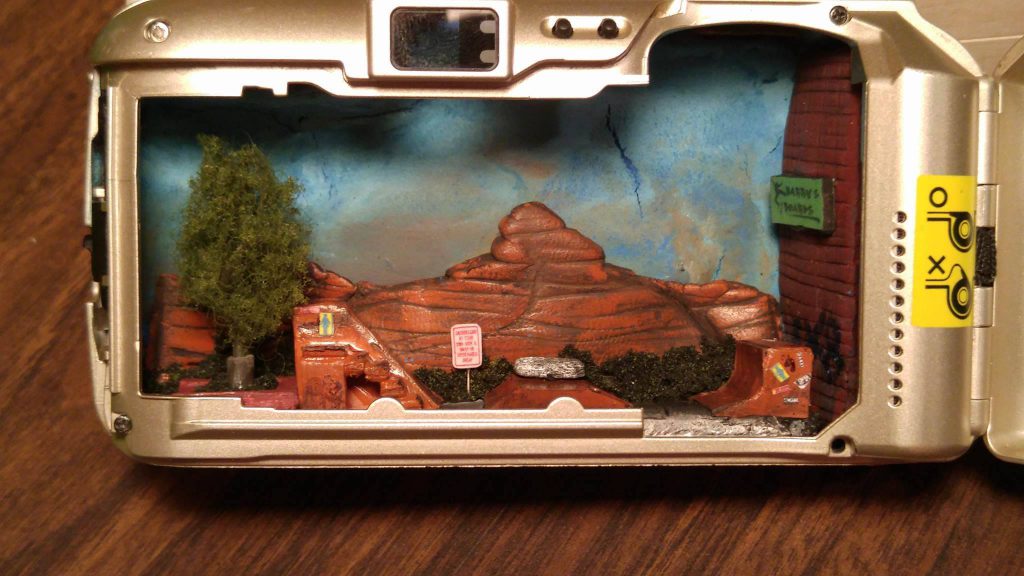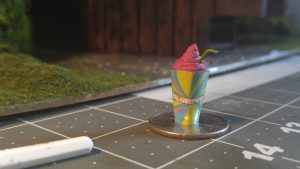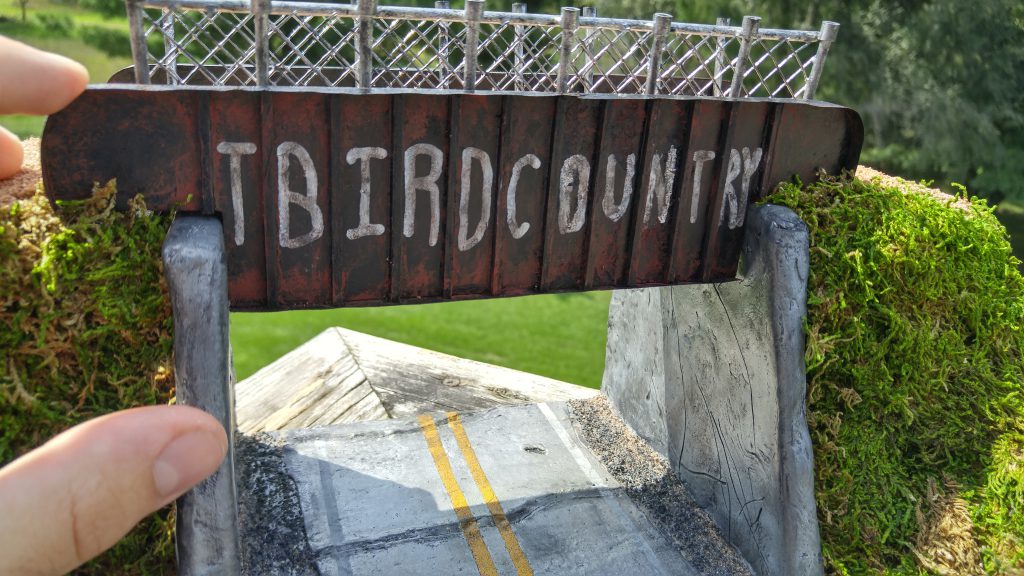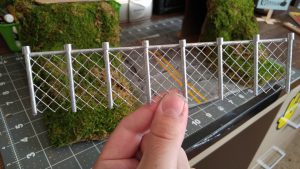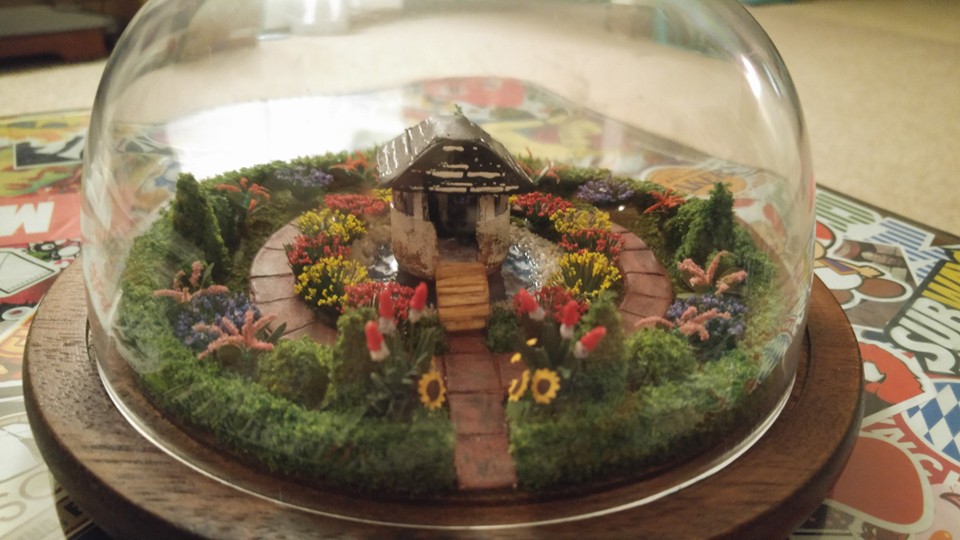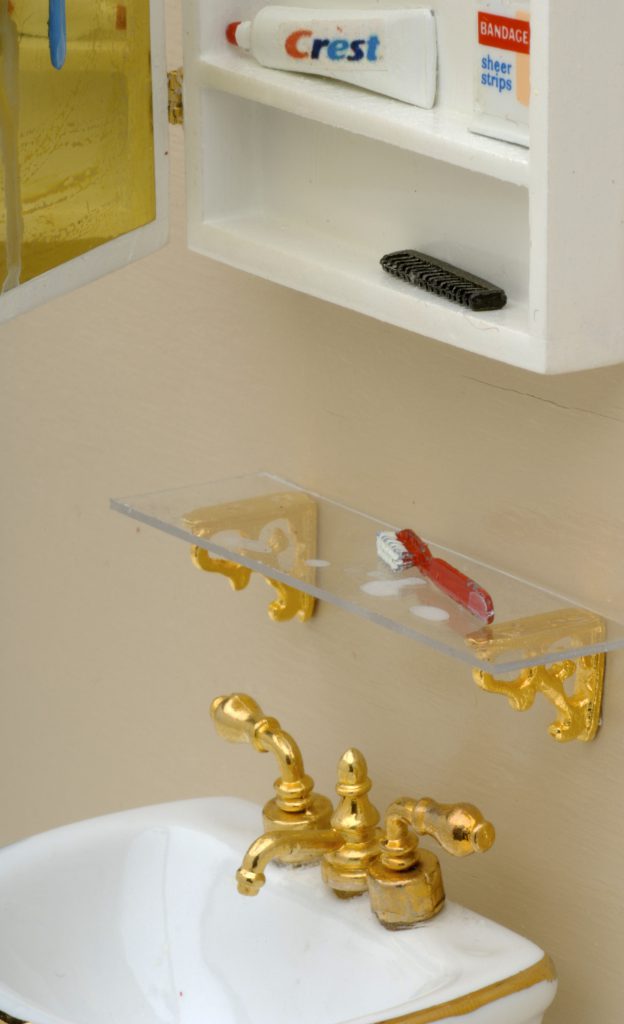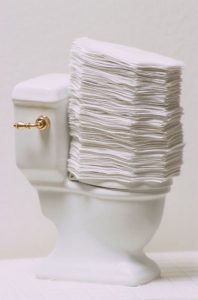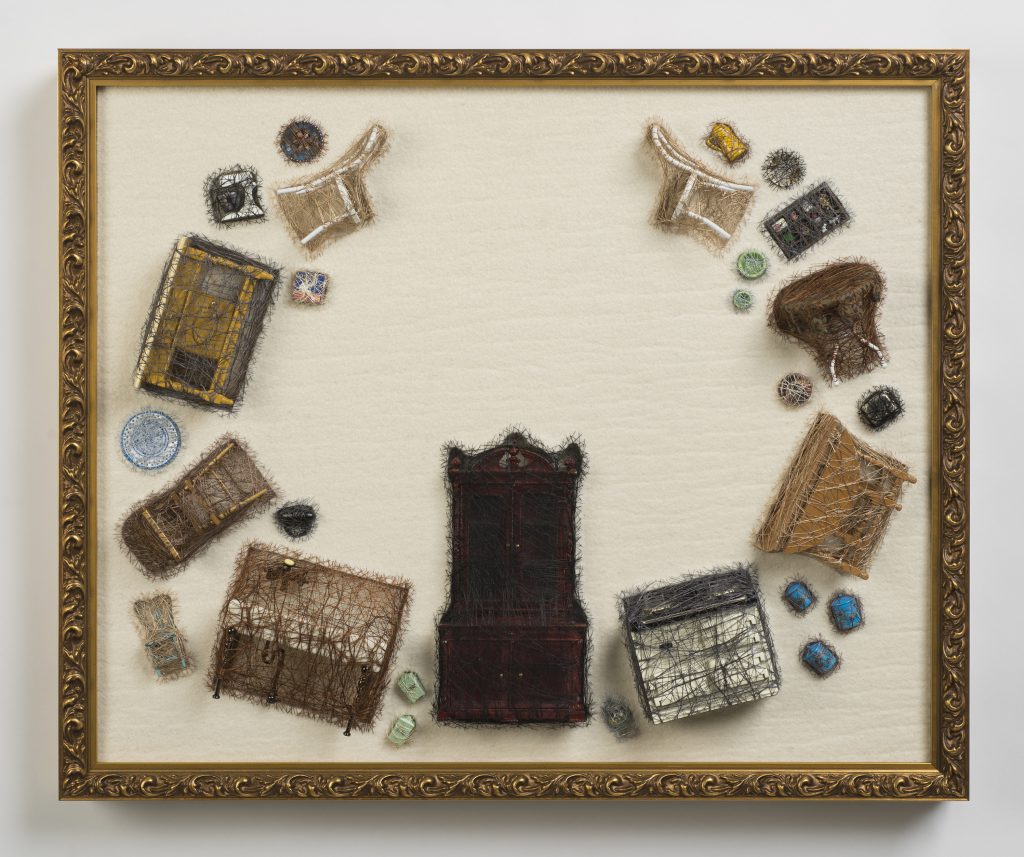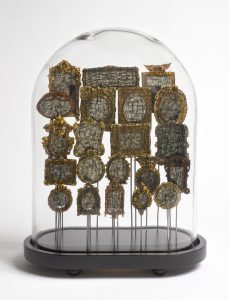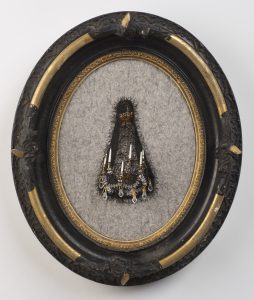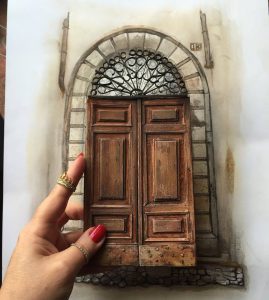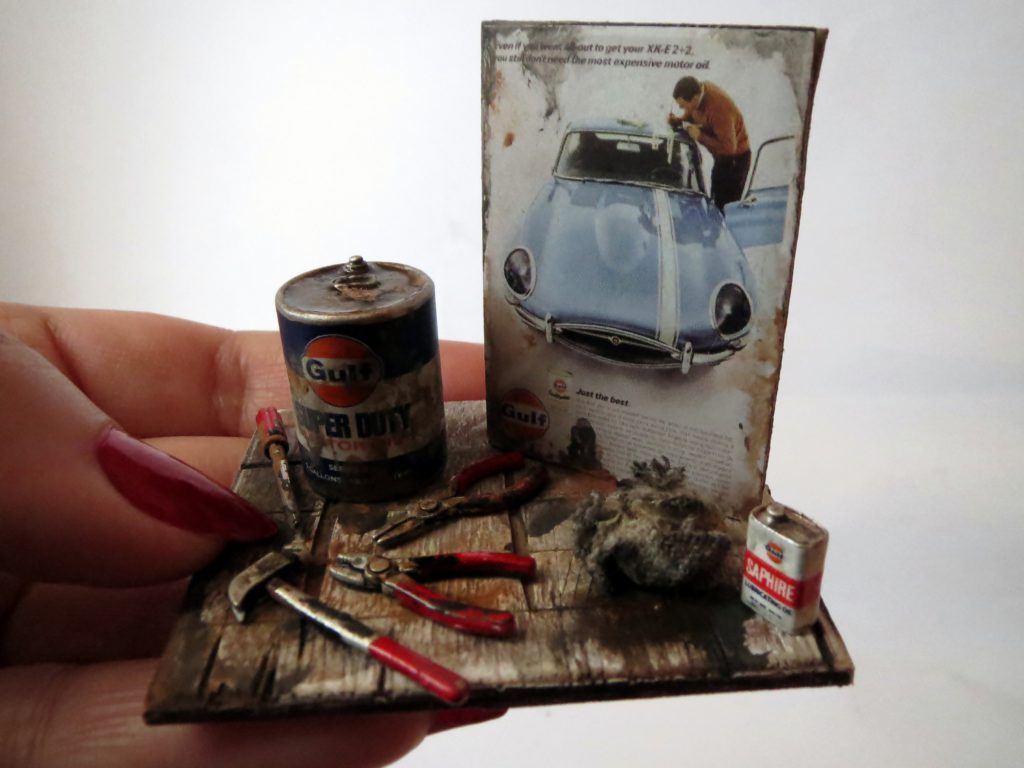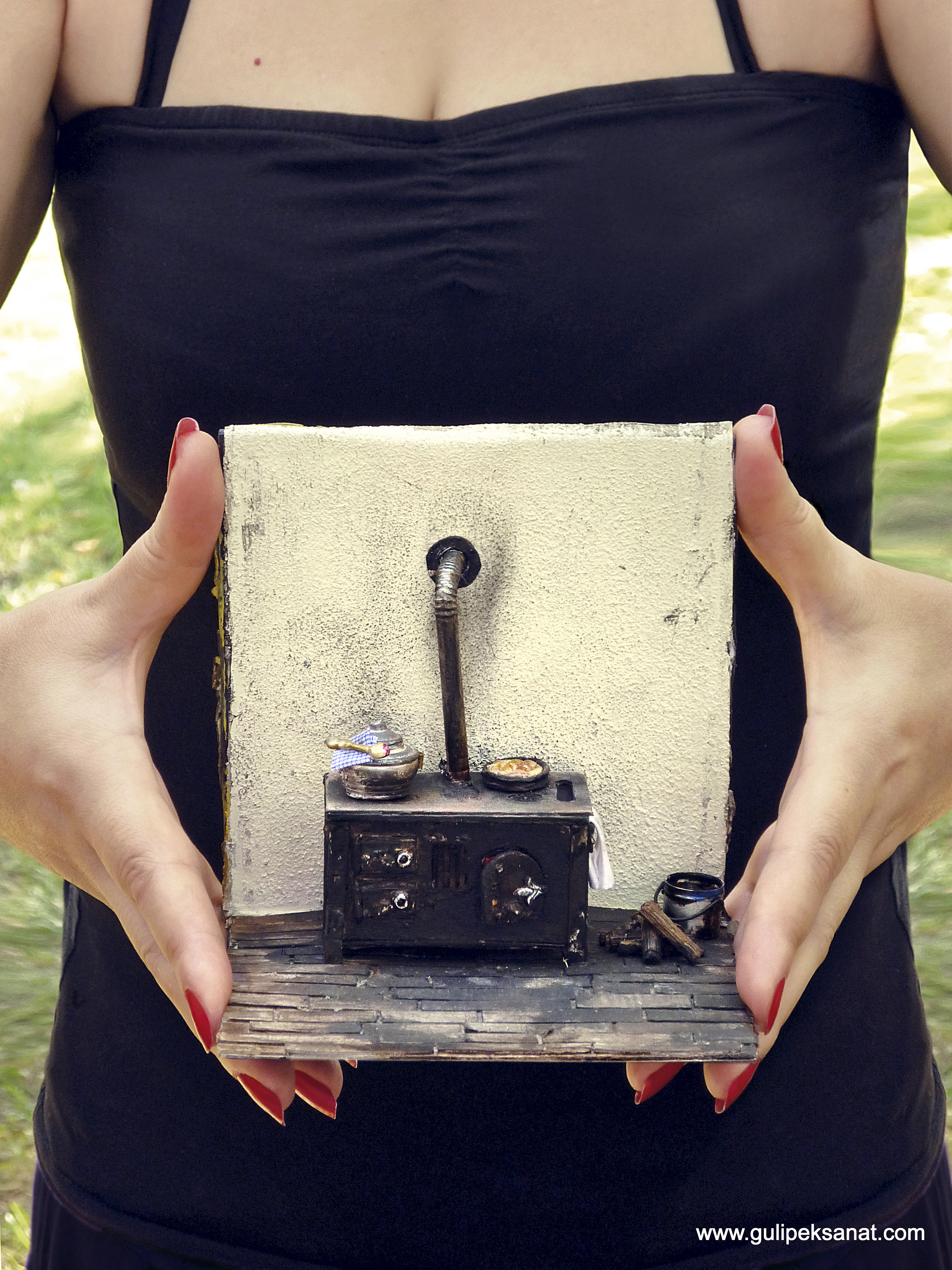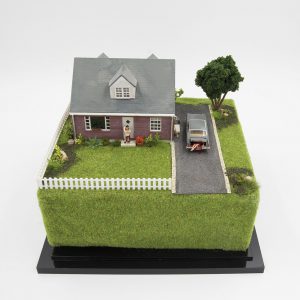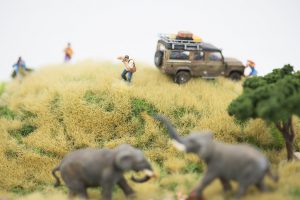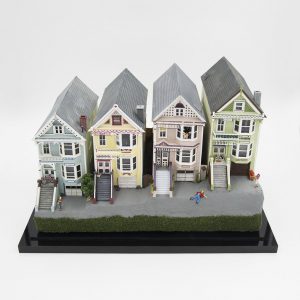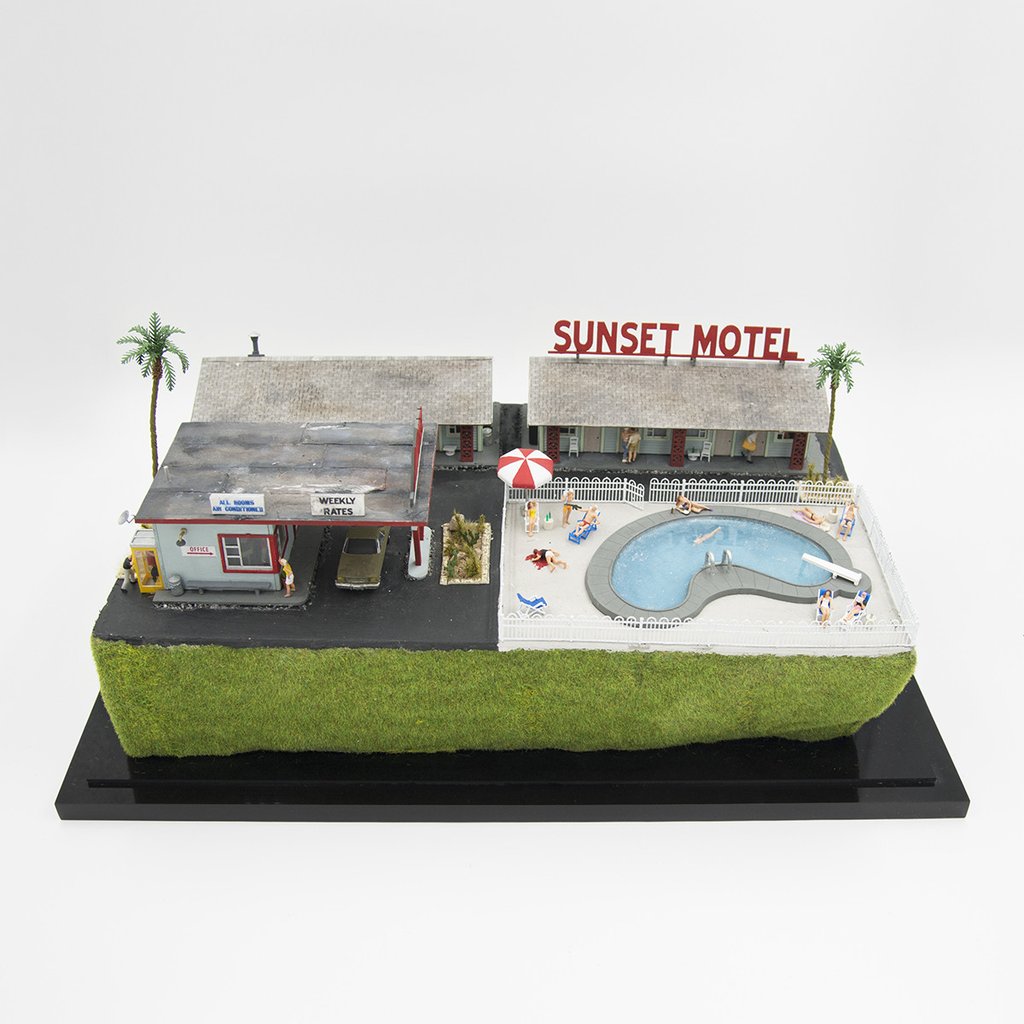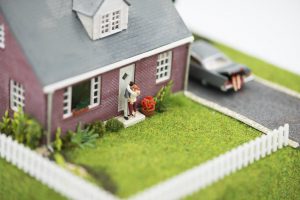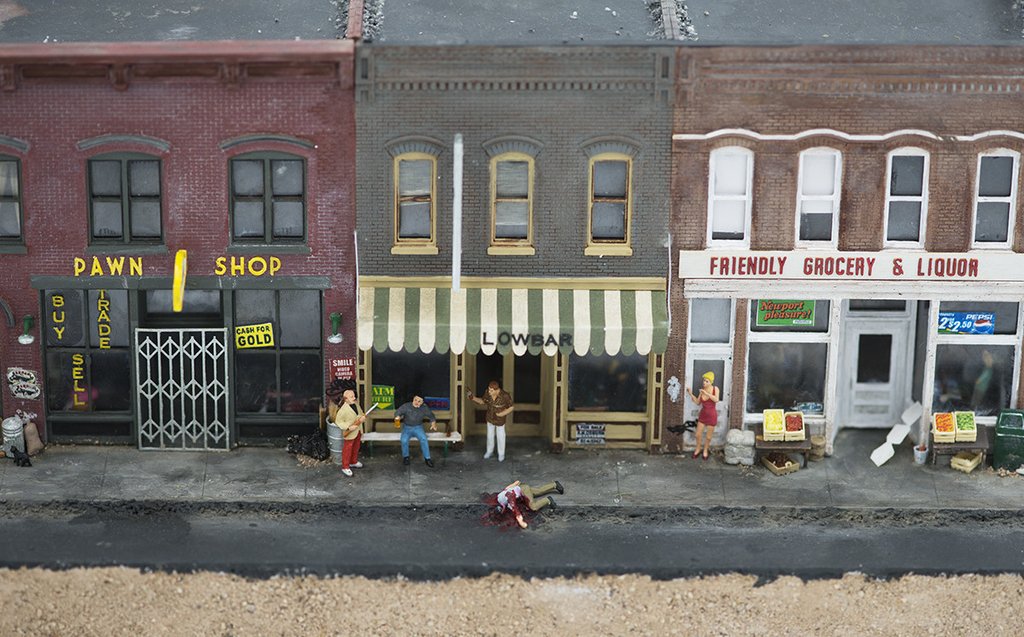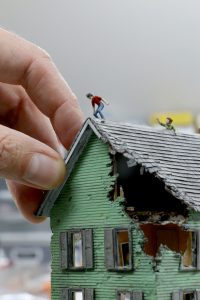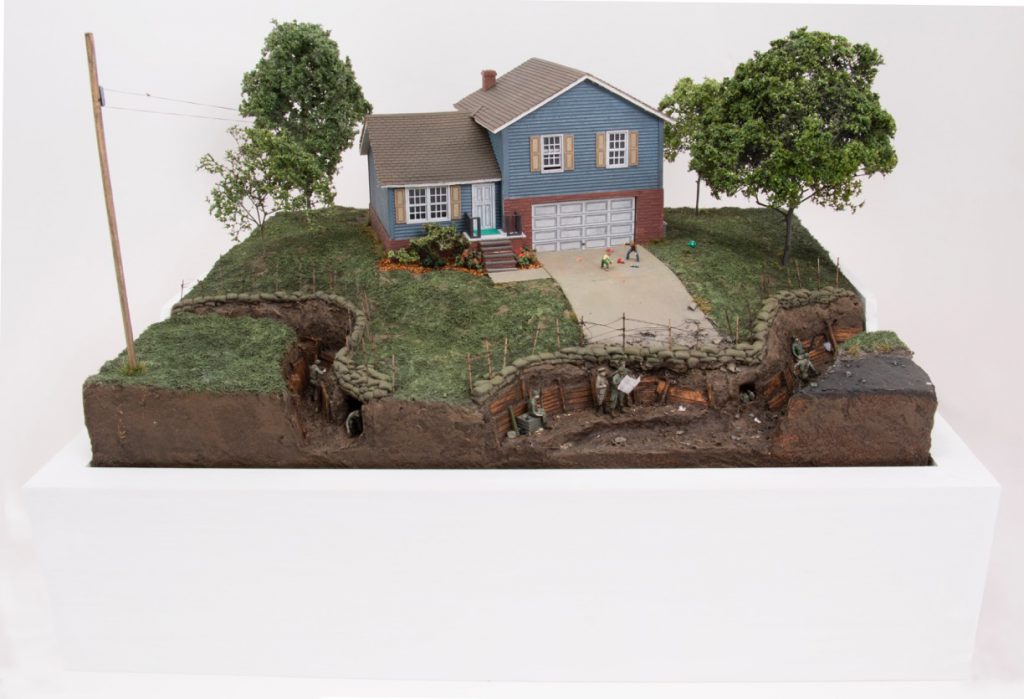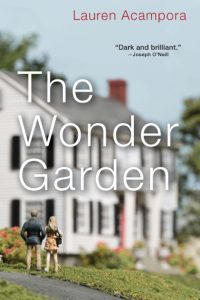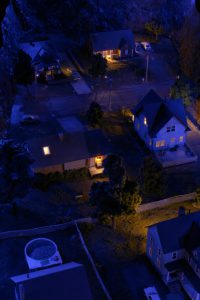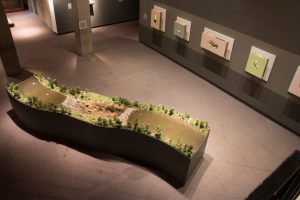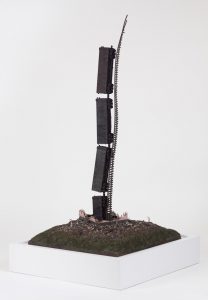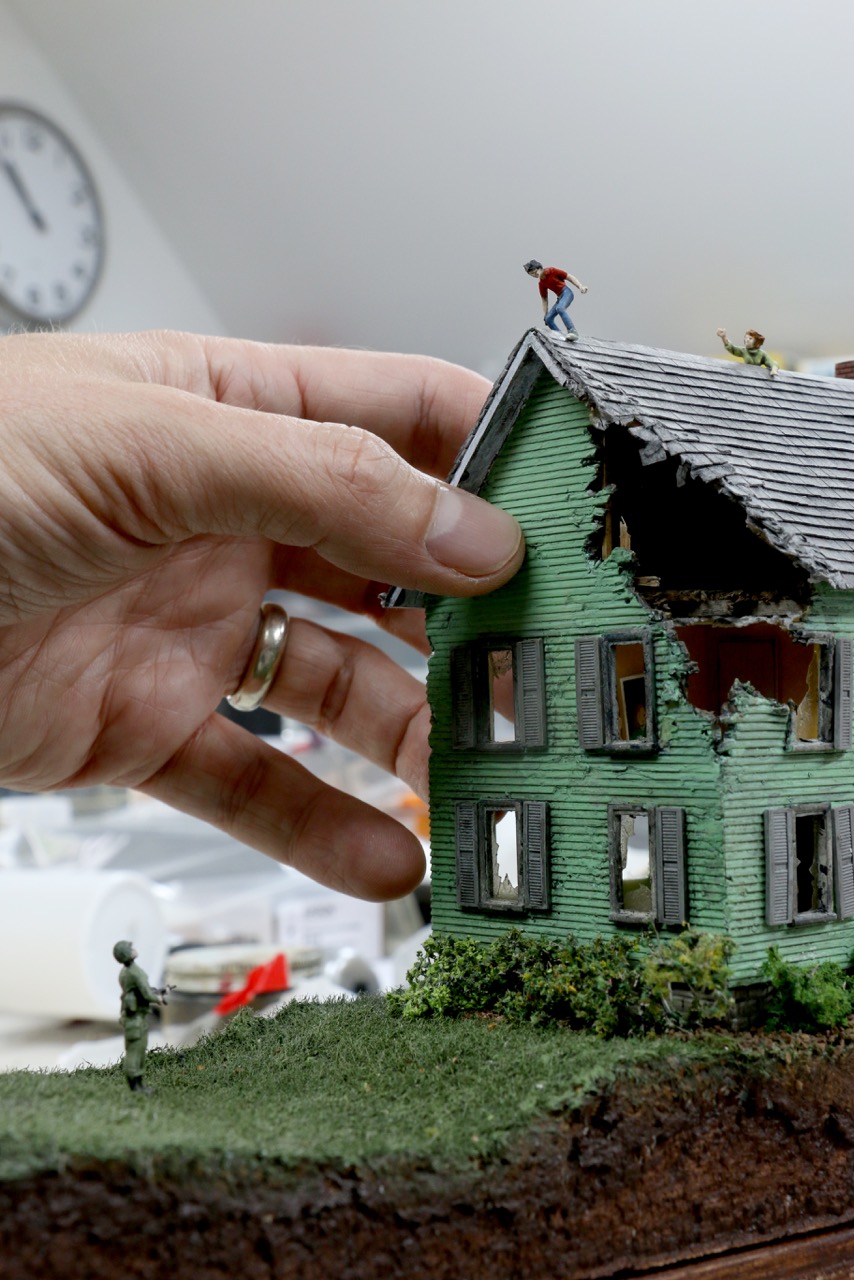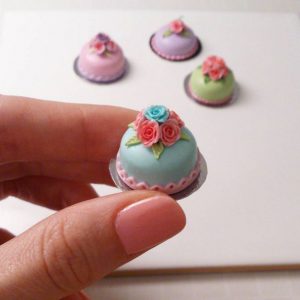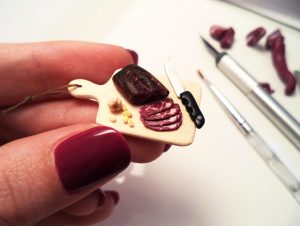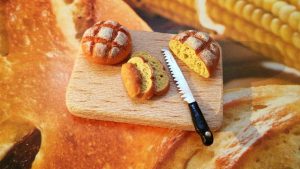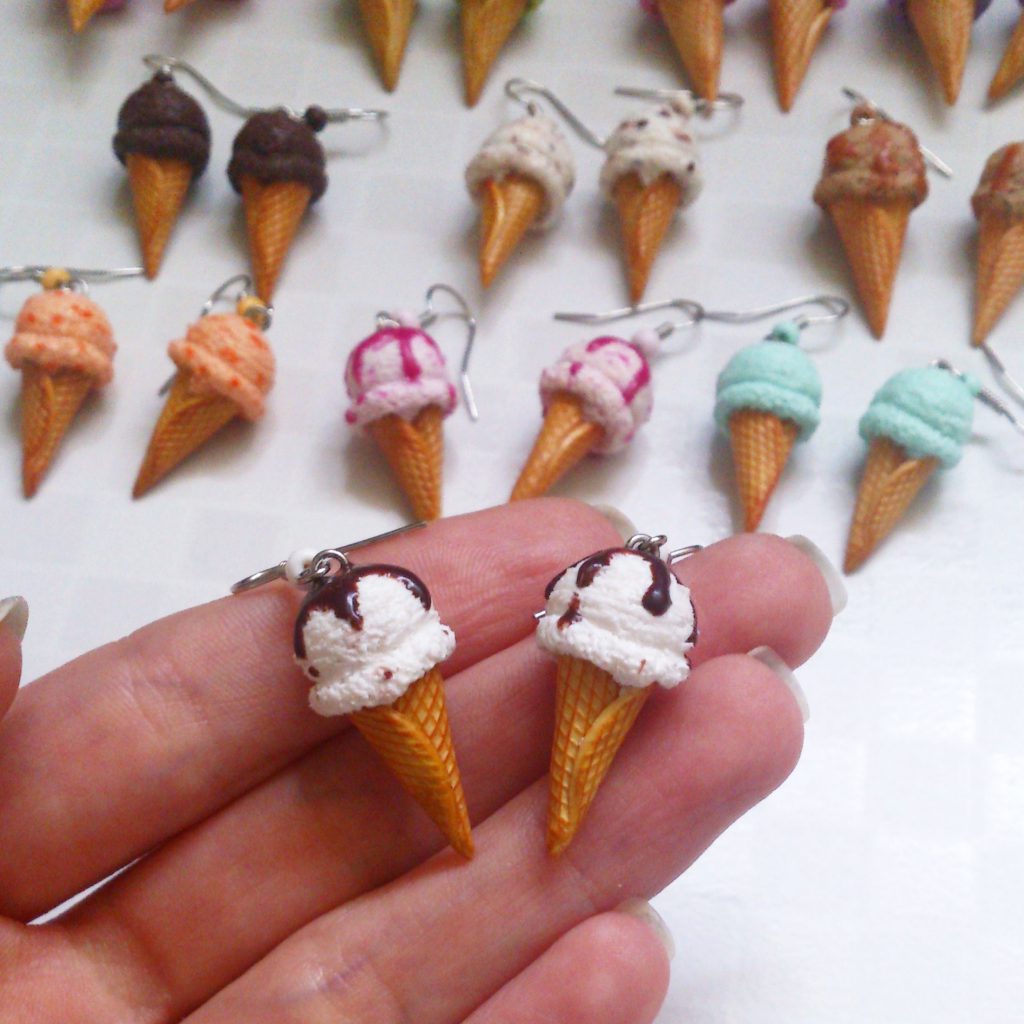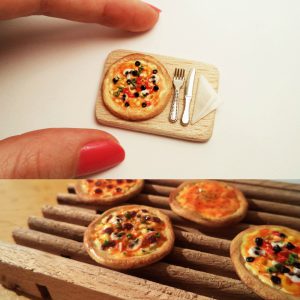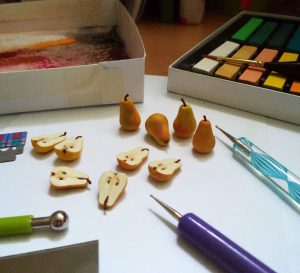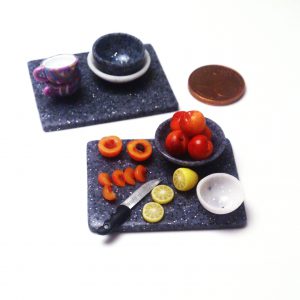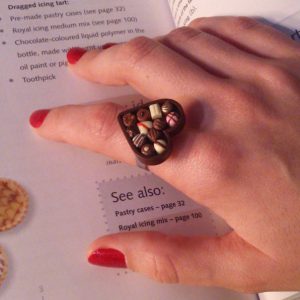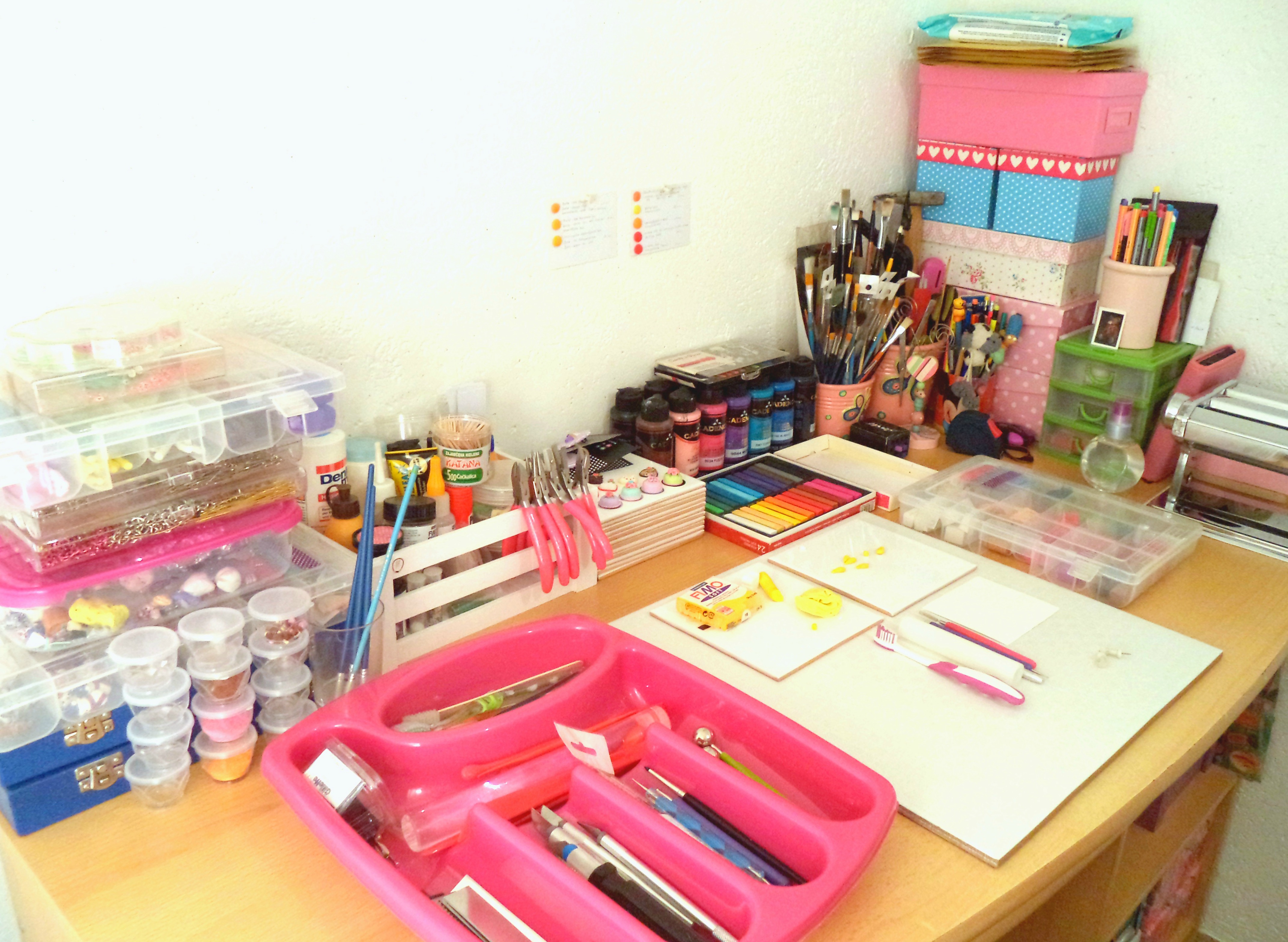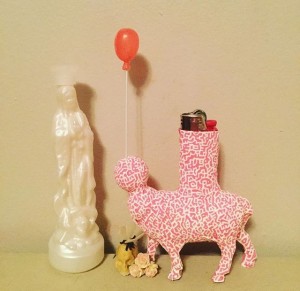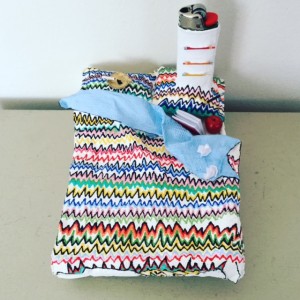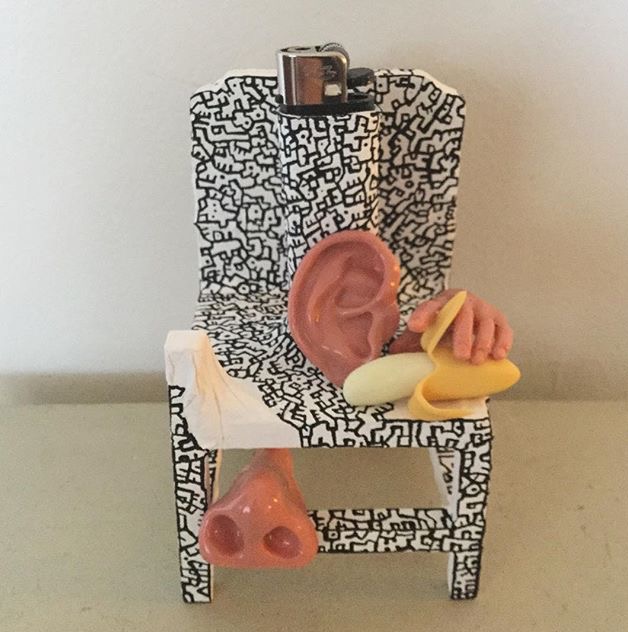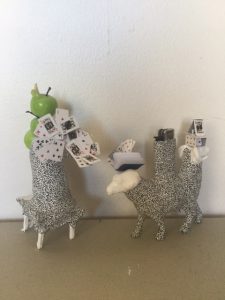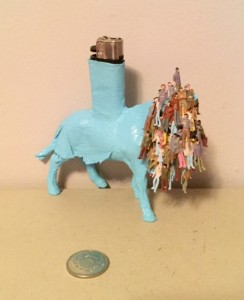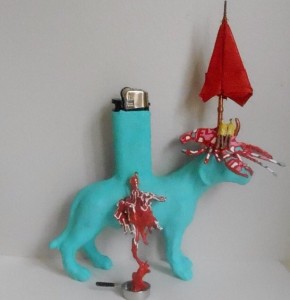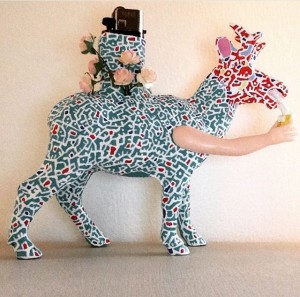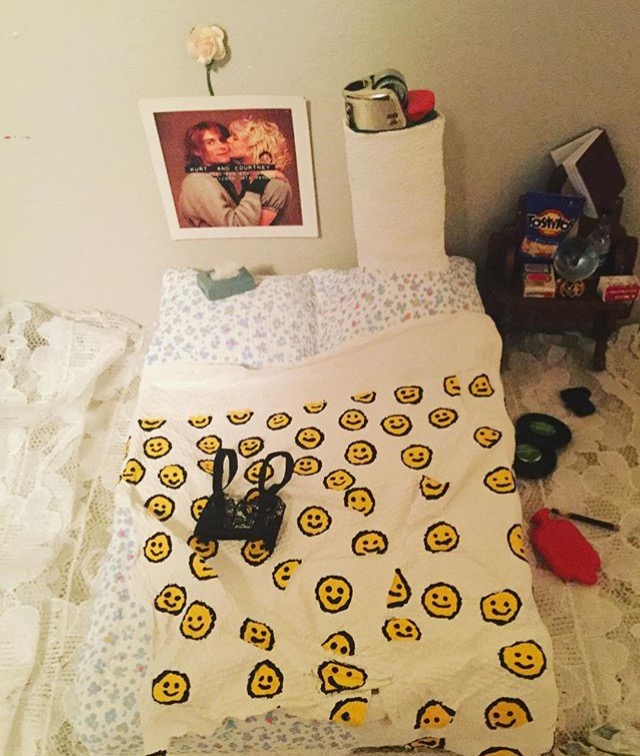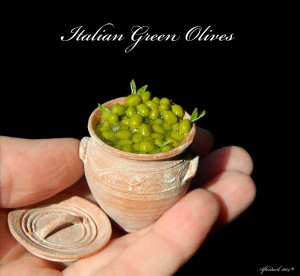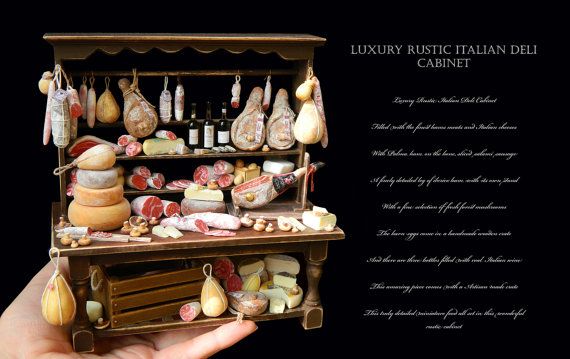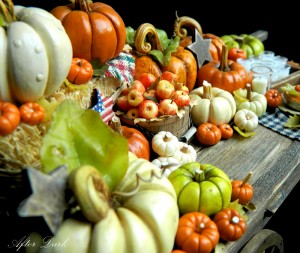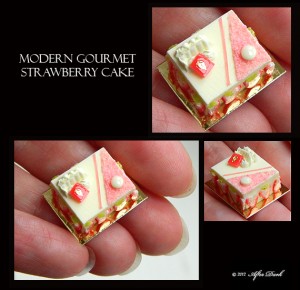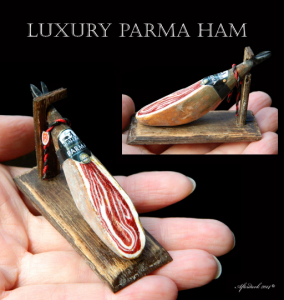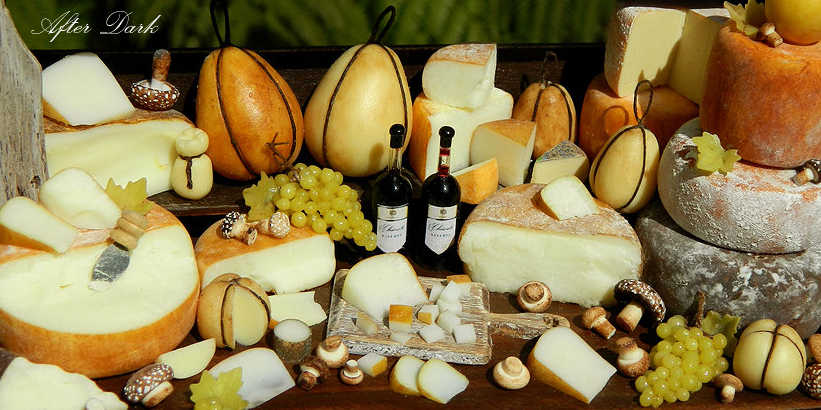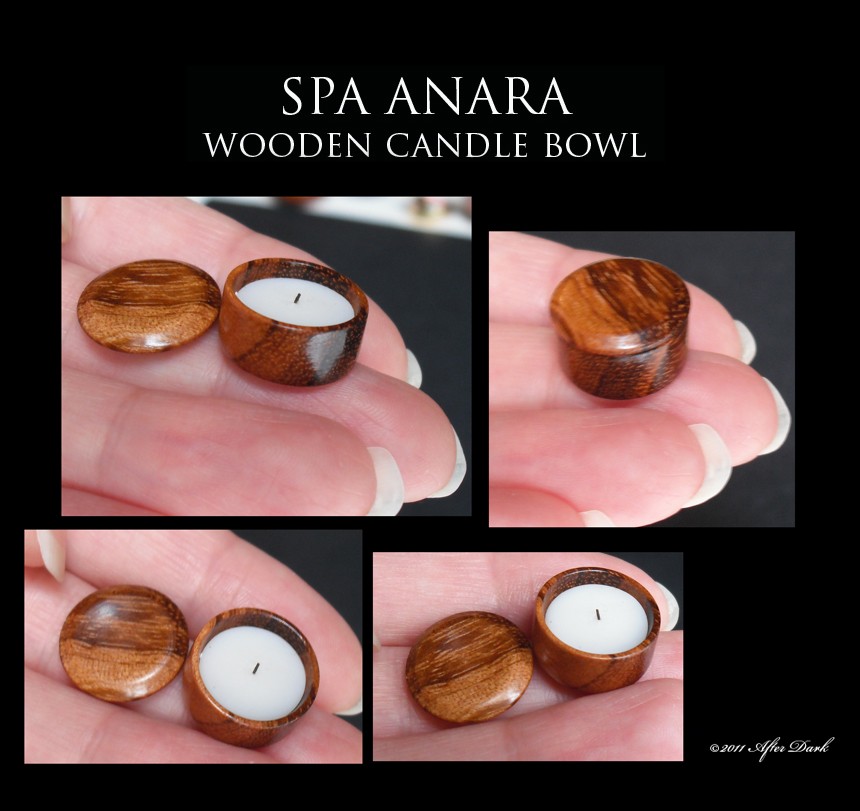Tic Tac® Presents Little Adventures (Created by The Martin Agency)
Martin Agency: | Website | Instagram | Facebook | Twitter |
Tic Tac: | Website | Instagram | Facebook | Twitter | YouTube |
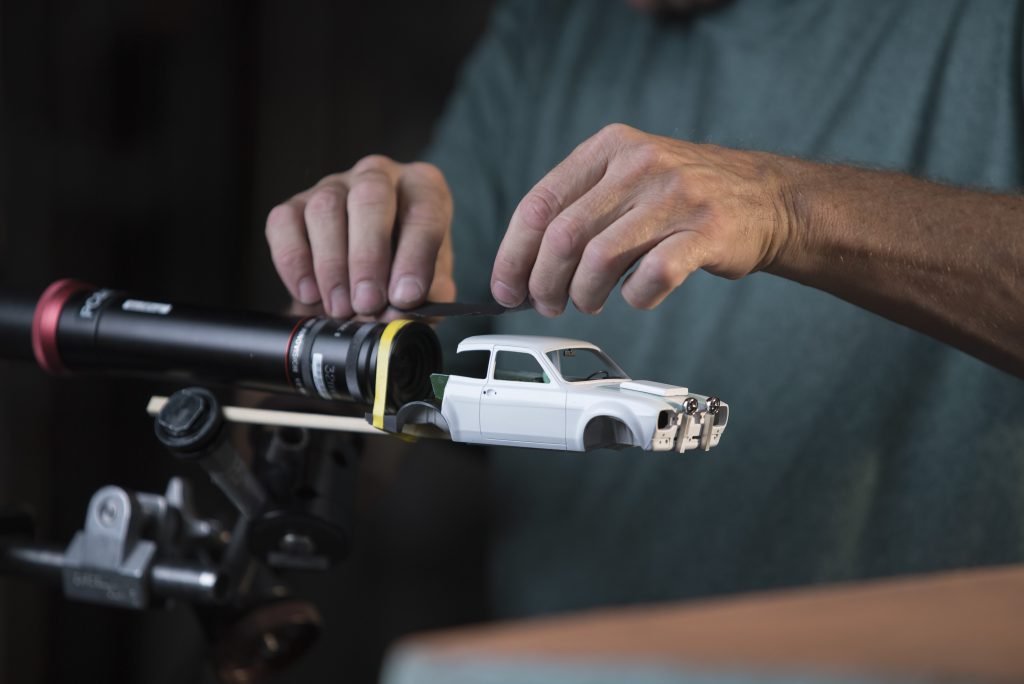
Tell us a bit about the concept behind Tic Tac’s Little Adventures.
Our “Go Little” campaign is all about getting people to think about “little” in a new way. To show that little can do big things. To get folks not to underestimate little. Little Adventures is a fun, silly, ridiculous way to do that. —Mark Habke, Copywriter
What were some of your inspirations behind the Little Adventures campaign?
I’ve always enjoyed Henri Rousseau’s forest paintings. Certain qualities of those may have found their way into my mind. —Todd Hippensteel, Senior Designer
Old natural history museum dioramas came up a lot when we were dreaming up sets. Also, Wes Anderson. There should be a sign in every ad agency that reads, “It has been 0 days since our last Wes Anderson reference.” —MH
What went into the making of this creative campaign?
Lots of coffee, strategy, meetings, emails, and really good storyboards from Todd. This was over a year in the making. —MH
Any favorite memories to recount from the making of Little Adventures?
Kathleen [Gerber] really enjoyed making the toolbox and tools for FALLS. Also tooling the plastic for the helmet in FALLS and for the capsule in SPACE. I loved figuring out the practical effects like making the skidding dust clouds in JUMP.
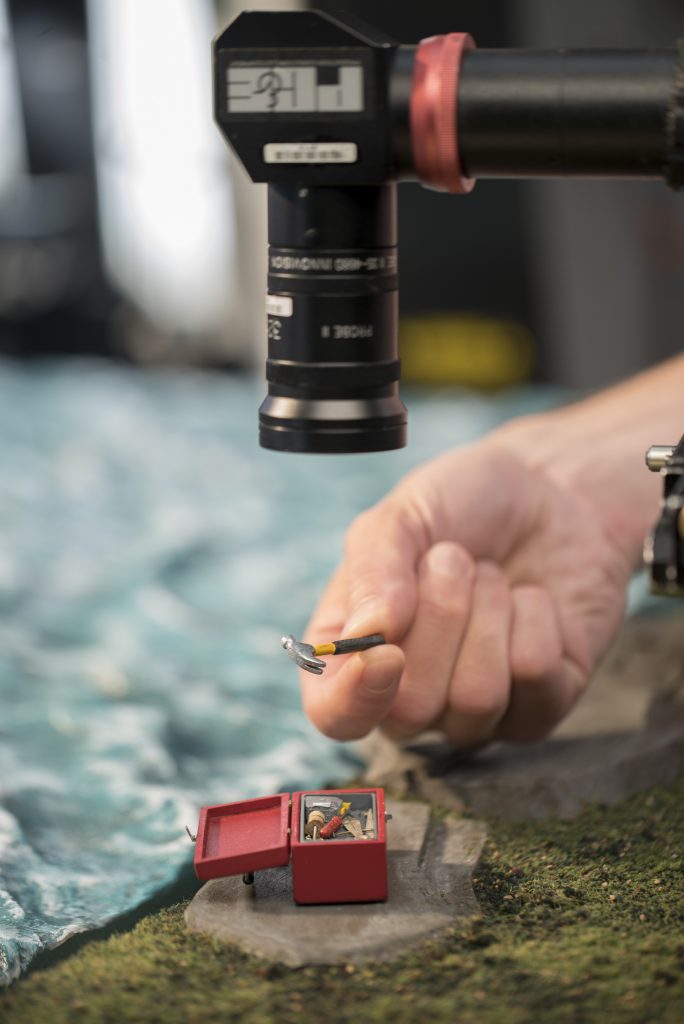 We also really enjoyed creating the different types of landscapes. Each one was so different, it let us use a variety of materials and techniques. The Martin Agency, Hue&Cry, director Jeff Boddy and the Director of Photography, Thomas Bingham, provided us a fantastic direction to follow and let us approach each scene in our own way. It was a great collaboration. —Lori Nix, Set Designer
We also really enjoyed creating the different types of landscapes. Each one was so different, it let us use a variety of materials and techniques. The Martin Agency, Hue&Cry, director Jeff Boddy and the Director of Photography, Thomas Bingham, provided us a fantastic direction to follow and let us approach each scene in our own way. It was a great collaboration. —Lori Nix, Set Designer
Any challenges you’d like to recount?
In the very beginning, we decided we did not want to make a “fill in” larger Tic Tac mints, that all scenes would use a real Tic Tac at its actual size. This was more of a challenge for our miniaturists Nix + Gerber, director and cameraman. It was tough but looks amazing. —John Szalay, Associate Creative Director
Solving how the river moves in FALLS. We knew we would not be able to utilize stop-motion animation, so in working with the miniature artists, we arrived at the solution of making a “slab” of water that could be moved back and forth by hand in-camera, with the knowledge that adding sound design in post would help further sell the technique. —TH
Four of the frames in our storyboards required close-up shots of objects so small that we’d have to break the laws of physics to make the background behind them visible. The camera lenses just couldn’t do it. We ended up putting them together in post. —MH
Creating props in scale to the very tiny Tic Tac mint was the main challenge. Specifically, making a diving mask and snorkel in SHARKS that could be transferred from pill to pill quickly and easily on set. —LN
How did this project reframe your thinking about the world of miniatures?
Miniatures have an inherent charm built into them. That is the plus. Being able to film such small objects require large amounts of research and planning ahead of time. That is the challenge. —TH
There’s something really funny about tiny objects doing things that are very big and serious. A Tic Tac looking through a tiny telescope makes everyone laugh and I can’t explain why. —MH
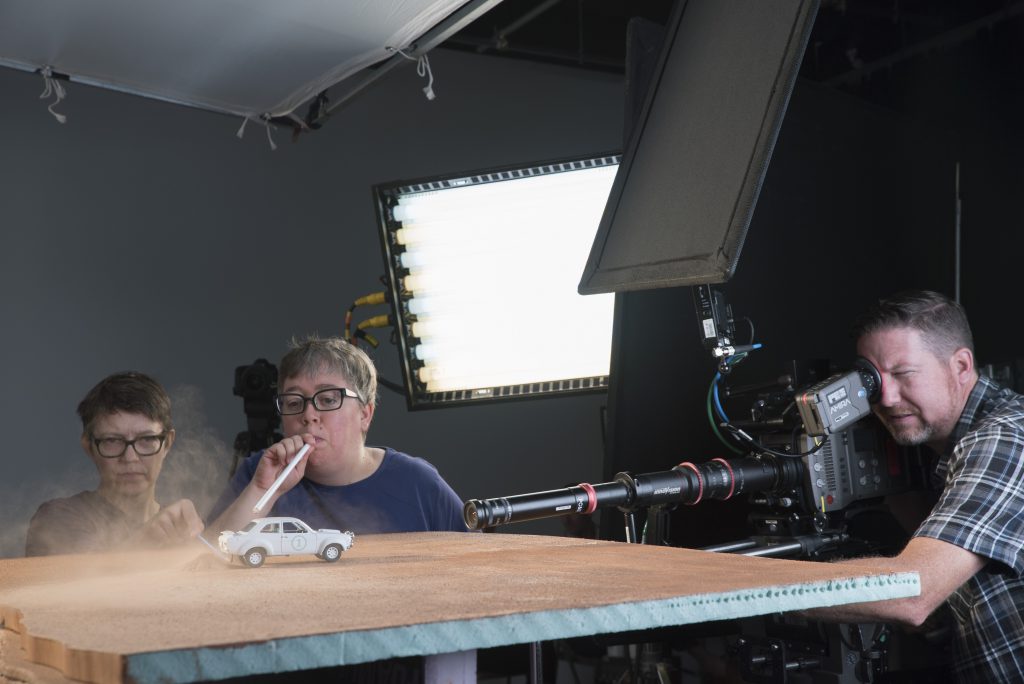
Does The Martin Agency team have a favorite scene, sequence, or spot?
I would venture to guess that they are all loved for their own unique qualities. —TH
JUMP is mine. —MH
And does the team of Nix + Gerber have a favorite?
Kathleen is partial to the rushing water in FALLS. The whole landscape really came together nicely.
I love SPACE. It was the first time we got to create an unfamiliar world. I also really like the tumbling, skidding car in JUMP.
The process of turning our sets over the to the other people on the creative team (lighting, camera, post production, etc.) has been such a positive experience for us. They bring the whole thing to life. It’s fantastic! —LN
Did the team at Martin Agency learn anything new about Tic Tac through this project?
Our Tic Tac clients were great to work with on this project. In the beginning, we shared a really rough, poorly shot (sorry guys) prototype and based only on that, they took a leap of faith and trusted us to bring them something great that is a perfect pay off to “Go Little.” —Stephanie Brummell, Account Supervisor
What’s to come from Tic Tac? What sort of adventures will this candy be going on next?
To go bigger, and simultaneously smaller. To stretch that divide even further in some way. —TH
That’s a secret. —MH
If you could sum up the Tic Tac Little Adventures campaign in one sentence or phrase, what would it be?
Very broad, yet also very specific, humor. —TH
Any favorite miniature artisans or designers you’d like to mention?
These are our favorite miniaturists, but we’re biased because they build awesome miniatures and sets for us: Nix and Gerber.
What would you like to see replicated in miniature that you have not yet seen?
Worlds that don’t exist on Earth for practical reasons. Inventive stuff. —MH
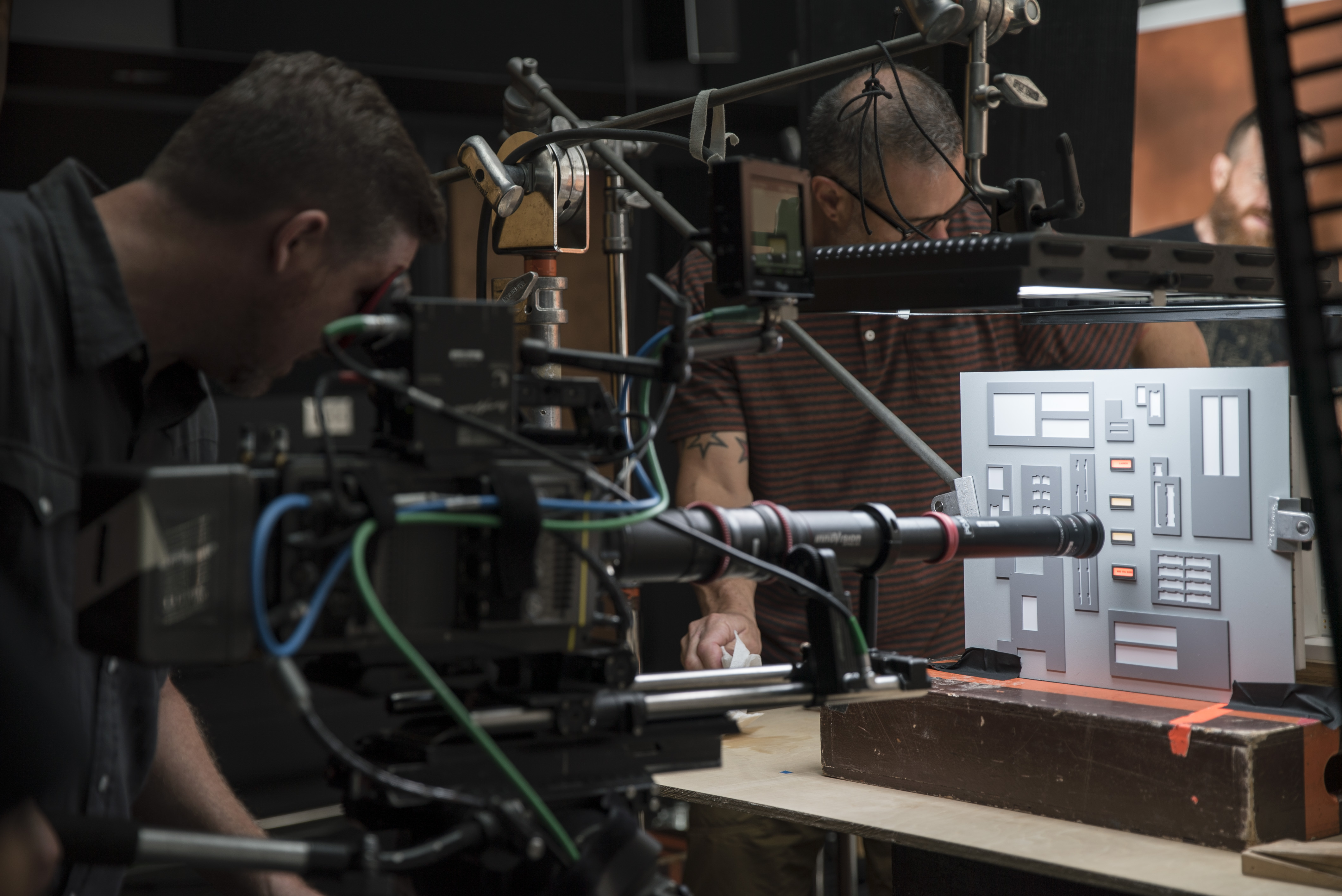
Anything else you would like to add about this campaign?
Believe in your little dreams. —MH
What don’t people know about the Martin Agency or about Tic Tac Little Adventures?
The Martin Agency is a big full service ad agency based surprisingly in Richmond, Virginia. We have accounts like GEICO, Oreo, Discover Card, Benjamin Moore, Timberland, and of course, Tic Tac. We also have offices in NYC and London. Our agency motto is “Good & Tough.”
Little Adventures is a sub-campaign under the “Go Little” tag line. You can see other Tic Tac work on the Tic Tac USA YouTube account.
Tic Tac Little Adventures were created by The Martin Agency, based in Richmond, Virginia. To learn more about this advertising agency, visit The Martin Agency website. You can also follow along on Instagram, Facebook, and Twitter.
You can view all the latest Tic Tac flavors and more here. Make sure to follow along on Instagram, Facebook, and Twitter. Visit YouTube to enjoy the latest Tic Tac Little Adventures, including SPACE, FALLS, JUMP, and SHARKS.
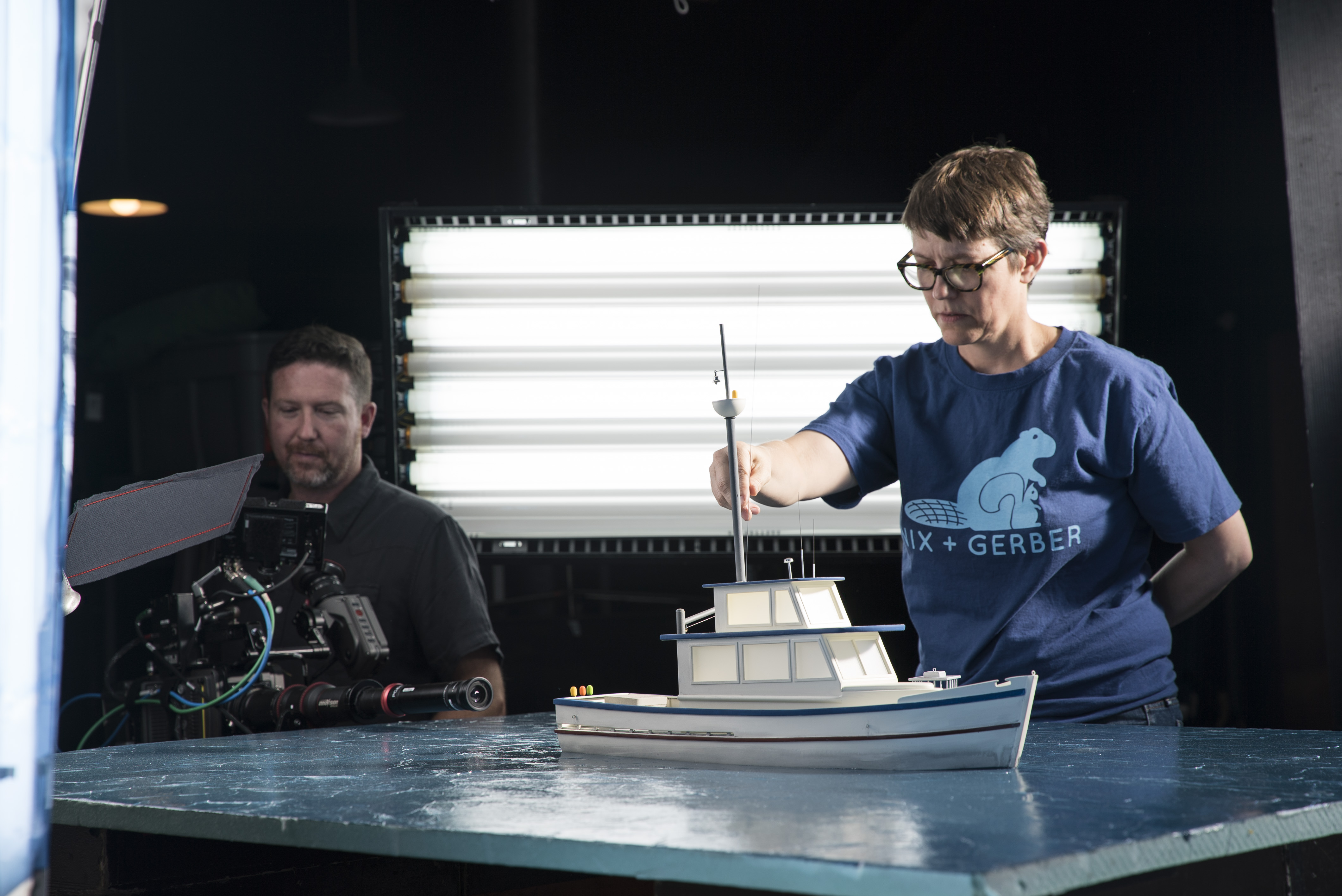
TIC TAC – LITTLE ADVENTURES – FULL CREDITS
Client: Tic Tac
Client Credits
VP of Marketing: Todd Midura
Marketing Director: Dan Cutchin
Client location: Somerset, NJ
Topic: Mint adventures
First Run Date: 8.25.16
Medium(s): On line Video
Ad Name(s):
“Space!” :30
“Falls!” :30
“Jump!” :30
“Sharks!” :30
Credits:
Chief Creative Officer: Joe Alexander
Group Creative Director: Danny Robinson
Associate Creative Director: John Szalay
Senior Designer: Todd Hippensteel
Copywriter II: Mark Habke
Executive Broadcast Producer: Letitia Jacobs
Associate Broadcast Producer: Emily Goodman
Junior Broadcast Producer: Nicolette Steele
Business Affairs Supervisor: Suzanne Wieringo
Senior Production Business Manager: Kelly Clow
Group Account Director: Darren Foot
Account Supervisor: Stephanie Brummell
Account Executive: Lauren Dushkoff
Project Manager: Hayley Soohoo
Senior Community Manager: Ari Sneider
Planning Director, UX Strategy: Meg Riley
Planning Director, Strategic Planning: Elizabeth Cleveland
Production Company: Hue & Cry
Director: Jeff Boddy
Creative Director: Magnus Hierta
Executive Producer: Joe Montalbano
Producer: Colleen Hopkins
Production Coordinator: Abbey Reddington
Storyboard Artist: Timo Prousalis
Assistant Editor: Andrea De Leon
Designer: Shannon Rollins
Animators: Liam Ward
Timo Prousalis
Andrea De Leon
Set Design Company: Nix + Gerber
Set Designers: Lori Nix & Kathleen Gerber
Live-Action Shoot: The Branching
Executive Producer: Lucas Krost
Producer: Alexandra Krost
Director of Photography: Thomas Bingham
Production Coordinator: Adela Satrova
1st AC: Tony Summerlin
2nd AC: Jack Payne
Media Manager: Rex Teese
Gaffer: Chris Thompson
Key Grip: Mike Flinn
Swing: Patrick McLynn
Production Assistant: Alex Delarosa
Where was the spots shot?: Richmond, Virginia
Offline Post Production House: Running with Scissors
Head of Production – Brian Creech
Editor – Danny Reidy
Online Post Production House: Running with Scissors
Editor: Danny Reidy
Assistant Editor: Brian Gregory
Colorist: Drew Neuhart
Lead Flame Artist : Chris Hagen
Flame Artist: Ashby Wratchford
Flame Assistant: Paul Wiederholt
Executive Producer: Brett Alexander
Head of Production: Brian Creech
Business Manager: Tracey Malkie
Music Company: Tiny Lion
Composer: Tiny Lion
Mix company: Rainmaker
Mixer: Mike O’Conner
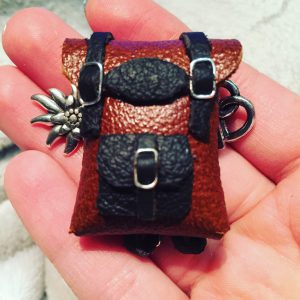 What’s your earliest memory with miniatures?
What’s your earliest memory with miniatures? 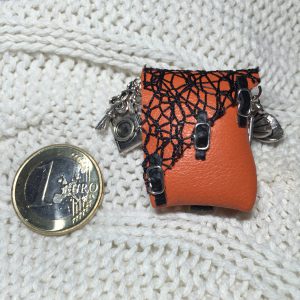 Do you remember the very first miniature you ever made?
Do you remember the very first miniature you ever made? 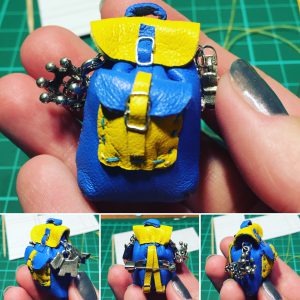 Tell us about the process of creating one of your miniature backpacks.
Tell us about the process of creating one of your miniature backpacks.  What is the most memorable miniature you have ever seen?
What is the most memorable miniature you have ever seen?